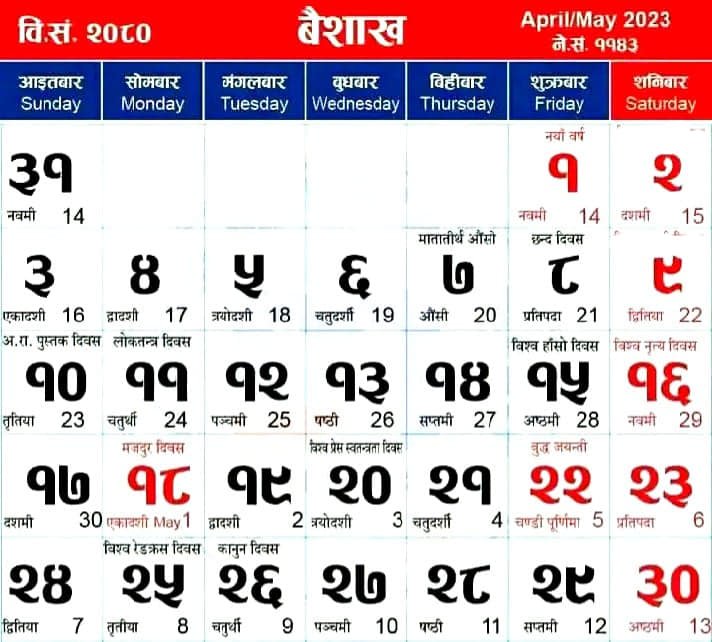Why Nepalese calendar is different?
What Is Bikram Sambat (B.S)?
Bikram Sambat (B.S) is the most recognized traditional calendar . All around the country, the Nepalese people use it. It's a historical Hindu calendar that is also pronounced Vikram Sambat. Since Hinduism has long been a favourite religion in the Indian subcontinent, Bikram Sambat has always had an important impact there.
Nepal follows an independent calendar than much of Asia. The Bikram Sambat, a widely used historic Hindu calendar, serves as the foundation for the Nepali calendar.
While the majority of the entire world uses the Gregorian Calendar as its official calendar, Nepal has its own traditional calendar called the Bikram Sambat. These two calendars differ by 56 years and 8 months in time.

What is the difference between B.S and A.D?
This calendar is still solely used as an official national calendar in Nepal. The Nepal Sambat calendar is one of the country of Nepal's various national calendars. The Nepal Sambat calendar is mostly used by the Newari population there.
Lunar months and solar sidereal years are used in this calendar. The first day of Baisakh marks the start of the calendar, while the last day of Chaitra marks its final day. Every month on this calendar has a duration of 30 days on average, and a year is made up of 12 months.
Lunar months and solar sidereal years are both used in the traditional Bikram Sambat. Because one year does not exactly match a fixed year, corrective months occasionally add or reduce. This calendar's years typically have 354 days. In line with the Metonic cycle, a leap month (Adhik Maas) is added about every three years (or seven times in a 19-year cycle) in order to ensure that festivals and customs pertaining to crops happen at the right season.